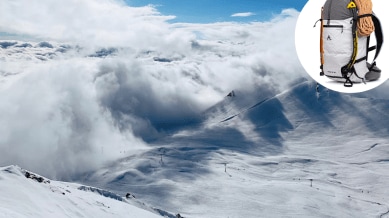36 people ‘buried’ alive to test device that can be crucial for survival during an avalanche in snowy regions
Science news: A new study of an avalanche safety device has found out that it can help buried victims survive longer by maintaining oxygen levels and reducing carbon dioxide buildup.

A group of 36 volunteers were ‘buried’ alive during a study for science. The new clinical trial has found that a user-carried avalanche safety device can prevent hypoxemia and hypercapnia for a significant amount of time in case a person is trapped alive under snow and debris. This can be critical in life and death situations. The volunteers’ safety was, of course, monitored constantly and were taken out as soon as their health parameters showed signs of dropping below a certain level.
The randomised and blinded study was conducted at a field site in Italy between January and March 2023. The test evaluated a novel airflow device designed to channel air from surrounding snow to the user’s airways. Unlike conventional systems, it operates without supplemental oxygen or a mouthpiece.
The research was published in the Journal of American Medical Association.
A total of 36 healthy volunteers aged 18 to 60 years were enrolled, with 24 completing the trial. Participants were buried under at least 50 cm of snow in prone positions while their vital parameters were continuously monitored. They were divided into two groups: one using the Safeback SBX device (shaped like a backpack) and another using a non-functioning (sham) device as the control.
Results showed a stark contrast between the two groups. In the intervention group, the median burial duration reached 35 minutes with no instances of oxygen saturation dropping below 80%. In comparison, the control group recorded a median burial time of 6.4 minutes and seven such events. Statistical analysis confirmed a significantly lower risk of critical oxygen desaturation in the device group (P< 0.001).
Air composition measurements also supported the device’s efficacy. Oxygen levels in the air pocket were higher in the safety device group (19.8%) than in the control group (12.4%), while carbon dioxide concentrations were markedly lower (1.3% vs 6.1%).
Researchers noted that since most avalanche-related fatalities occur within 35 minutes due to asphyxia, extending this critical window could greatly improve survival odds.
The findings suggest that integrating this airflow technology with existing avalanche safety tools — such as airbags and transceivers — could improve rescue chances, especially in snow-clad avalanche-prone areas, such as the higher reaches of Jammu and Kashmir, Ladakh, Uttarakhand, Himachal Pradesh, among others. The device can buy victims more time before oxygen deprivation becomes fatal.